
Growth in the Dolores River Valley is somewhat constrained by the terrain as well as by a minimum lot size of 10 acres as set by the county. The commissioners are taking public input on a proposal to slash the minimum lot size in the rest of the county. Photo by Janneli F. Miller
The Four Corners region is, by most standards, sparsely populated. In the view of many of its residents, this is a good thing.
People enjoy the wide-open spaces, deliberately choosing to live where there are not long lines at restaurants, banks or grocery stores, few crowded parking lots at trailheads, and where it is common to run into a friend or neighbor while going about daily lives.
But some people believe the area would get a desperately needed economic boost from a few more residents.
Montezuma County Commissioner Larry Don Suckla has said there are folks looking to move here who can’t find reasonably affordable housing. For this and other reasons, the commissioners have been mulling some changes to the county’s land use code that could lead to an increase in the population.
One such proposal is to reduce the county’s minimum lot size from three acres to one acre (except in the Dolores River Valley, where the minimum has been set at 10 acres).
The commissioners have had one public hearing on that proposal and other proposals, and will continue the hearing on Tuesday, Oct. 20, at 1:30 p.m., in their meeting room in the county courthouse, 109 W. Main, Cortez.
Carrying capacity
How many of us can Mother Nature carry? For obvious reasons, this question should be of vital concern to all of us, but especially to those youngsters who will inherit our Earth.
The biological concept of “carrying capacity” refers to the amount of living organisms that an ecosystem can support indefinitely. When the population of a species exceeds the carrying capacity of the area it inhabits, the resources required to sustain life, such as food, water and other necessities, become depleted and the species begins dying off.
An example familiar to residents of the Four Corners would be how many cattle an acre of land can support. The answer will depend on the habitat – or ecosystem – and all ranchers know that an acre of dryland will support fewer animals than an acre of irrigated pasture. When there are abundant resources, a population will grow, and with resource scarcity, a population declines.
The world population of humans is increasing rapidly, by about 1 billion every 12 years since the late 1980s. Currently at 7.8 billion, there will probably be 8 billion people on earth by 2023. Are there enough resources to provide for all these humans? It depends, and it varies according to geography, environment and density.
Population density tells us how many people there are per square mile.
It varies greatly by country. Last year Bangladesh had more than 2,753 people per square mile, while in 2020 the U.S. had an average population density of 94. Washington D.C. is the most populated area within the United States, at 11,569 ppsqm, and not surprisingly, Alaska is the least dense, with only 1.3 ppsqm. In the Four Corners region, Arizona is the most densely populated with 64 ppsqm, with Colorado at 52, Utah at 39, and New Mexico at 17.
Of course within states, the density also varies greatly.
The city and county of Denver is the most densely populated area in Colorado, at 4673 ppsqm, with Montezuma County at only 13, La Plata County at 33, San Miguel County at 6, and Dolores County at 2 ppsqm. Kiowa, Hinsdale and Jackson counties all have less than 1 ppsqm. San Juan County Utah has 2 ppsqm, while San Juan County New Mexico is at 22 ppsqm. (Numbers from website https://worldpopulationreview.com/)
Fewer people can mean fewer amenities such as social support systems, medical services, and educational opportunities, as well as leaner economic options. In 2019 the median household income for Colorado was $77,000, while in Montezuma County it was $49,000.
It was $33,000 in Dolores County, $46,000 in San Juan County Utah and $45,000 in San Juan County NM.
Richer local communities include La Plata County with a median income of $69,000 and San Miguel County at $65,000. (https://www.hometownlocator.com/)
So if carrying capacity means individuals having the resources necessary to survive, how is Montezuma County doing? There is more land per person, but also fewer of the necessities available to support county residents.
Food
In the 1930s with a population of 8,000, Montezuma County was food-secure – producing enough food for all of its residents. By 2011, the population had tripled and most of the food was trucked in, which is the case currently.
Yet many people in the county go hungry. Over 50 percent of students qualify for the school free-lunch program and one in three children in the county suffer from food insecurity. At the same time, there is a local food renaissance, with the number of farmers in the county increasing from 4 percent of the population in 2013 to 6.5 percent today. Many are working to return the county to its original self-sufficient food-producing roots.
The Montezuma Food Coalition, a nonprofit devoted to equitable food distribution for the community, partners with several other community organizations including Good Sam’s Food Pantry, the Piñon Project, the Good Food Collective, Mancos Foodshare, the Sharehouse and the Women, Infant and Children (WIC) program, to provide food to those in need and raise awareness of all matters related to food, including nutrition and budgeting.
Members have raised funds to purchase and distribute food to families in need due to the coronavirus. Directed by former owner of the Farm Bistro Laurie Hall, the coalition’s goal “is to provide space, infrastructure, and coordination for the aggregation and distribution of donated, gleaned, and purchased local food for use by area organizations who are working hard to address food insecurity.” (https://www. montezumafoodcoalition.org/mfc-boardof- directors)
The Southwest Farm Fresh cooperative (SWFF, begun in 2014) is a coalition of local farmers who provide farmer-owned marketing and distribution of local foods. Customers of the SWFF online market have donated over 100 food boxes to residents in need just this summer.
The co-op sells food to regional restaurants, operates an online market, and offers wholesale purchases of local farmer’s products, including meats, cheeses and cottage foods like hot sauce, mustard and tortilla chips.
It’s hard to say how much food is available to residents per capita since these kinds of statistics aren’t easily aggregated. Yet the reality is that even in our agriculturally inclined community, many residents today are not getting enough high-quality food.
Running dry?
“We can’t just make water,” said Mancos Mayor Queenie Barz. She told the Four Corners Free Press, “We are very concerned about the increase in population. We’ve been in a drought so we’ve had to restrict watering within the city of Mancos, and the farmers have been restricted on their irrigation water because it’s not available.”
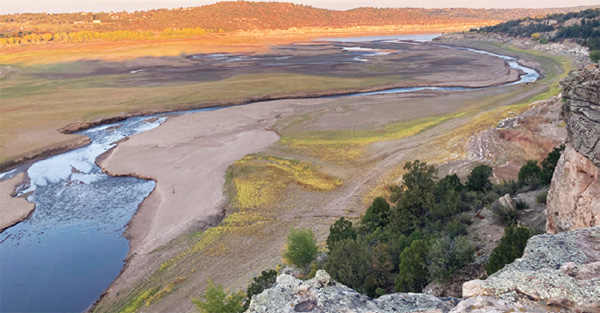
McPhee Reservoir is at a low level, as Southwest Colorado is in an extreme drought. Water supplies are one issue that could impede major growth in the area. Photo by Janneli F. Miller.
The Four Corners is currently in a “mega drought” while Southwest Colorado is in “extreme drought,” according to the Department of Agriculture’s Sept. 29 drought map. While the area has been lucky enough so far to avoid the kind of fires experienced in California, Washington and Oregon, forests are dry, there’s no snow on the mountains or in the forecast, and water supplies are dwindling.
The Dolores River was running below average with a flow of 33 cubic feet per second on Oct. 4, which is 100 cfs below average, while the Animas river at 131cfs is about 150 cfs below average. (CFS measures flowing water, the number of cubic feet passing a fixed point every second.)
Reservoirs in the county, including Narranguinep, Summit lake, Jackson Gulch, and Mcphee, were all low or empty – McPhee reservoir was 6867 acre-feet (af) on Sept. 30. The minimum pool is 6855 af, and the lake level is dropping about 695 af a day, according to data from the Dolores Water Conservancy District website.
Reservoir water is allocated to farmers for irrigation, the Ute Mountain Ute Tribe, and the Montezuma Valley Irrigation Company (MVIC).
Water allocation in the county is complicated, according to Gary Kennedy of the Mancos Water Conservancy District (MWCD) – since “each project is so different from the other ones.” Several reservoirs are privately owned – including Totten, Summit, Weber, Bauer and Joe Moore – and were built by people who formed a small company and allocate the water according to member needs.
McPhee is a federal project, with different regulations, and Jackson Gulch is run by MWCD, which provides most of the water to the Mancos Valley.
Besides the reservoirs and the private companies selling water shares, there are potable water “docks” in place in Dolores, Mancos, Cortez and Pleasant View.
“You pay the money and use the water dock,” said Barz. “It’s 25 cents per so many gallons.”
But one problem is that anyone can buy water from the water docks – not just residents. Barz explained that in 2019 Durango shut off its water dock, and “we had people coming from Durango, and Hesperus and other places in La Plata County to use our water dock and the use tripled.
“Yes, we made more money, but then we had to shut the water dock off two or three days a week because the town’s responsibility is for the citizens who live here.”
Barz said Mancos is already rationing water. “We’ve been in a drought so we’ve had to restrict watering within the city of Mancos, and the farmers have been restricted on their irrigation water because it’s not available.” Residents can only water only every other day from 6 to 10 p.m.
“There’s no way to create additional water,” she added. “The county can’t, the state can’t, the U.S. government can’t!”
Kennedy said the Mancos River is already over-allocated, meaning there are people that have water rights on the Mancos, “but they typically can’t get it because it’s only there on very few years when we have tremendous snows.”
Water rights are categorized as “junior” and “senior,” with the earliest established rights being the most senior, meaning they have use of the water before anyone else. “A senior water right is a No. 1 water right,” explained Kennedy. “As of today you can get a 2020 water right, but the chances of ever getting any water are slim.”
Other necessities
Besides water and food, humans have other needs, including health services. A Community Health Needs Assessment (CHNA) conducted in late 2019 for the Southwest Health system by Community Hospital Consulting found that Montezuma County lagged behind the rest of Colorado in terms of meeting the health needs of its residents.
There are fewer medical providers and dentists per person in Montezuma County than the rest of the state.
Lower incomes, higher unemployment, more families living in poverty, and more food insecurity than the rest of the state means that many residents are in poor health but end up delaying or foregoing necessary medical care. They may wait until they are really sick and then utilize emergency services, which are not designed as a substitute for regular health care.
Montezuma County also has a higher percentage of individuals with poor mental health than the rest of the state, but fewer mental-health-care providers. Substance-abuse issues are common, but the county lacks services like a detox center, in-hospital social workers, or support for substance-abuse patients.
The assessment also found that residents of the county have higher rates of mortality than the rest of the state. Cancer and heart disease are the leading causes of death in Montezuma County, but residents are also dying in higher numbers for other reasons, including chronic liver disease, accidents, suicide and diabetes.
The county has higher rates of communicable and chronic diseases and unhealthy lifestyle behaviors than the rest of the state, including chlamydia, gonorrhea, diabetes, obesity, asthma, arthritis, physical inactivity, smoking and marijuana use.
The county’s rate of inadequate prenatal care is also higher than the rest of the state, and more babies are born with low birth weights. The elderly suffer more chronic diseases and urinary tract infections. Clearly, many county residents are not getting the health services they need.
Domestic facilities are also lacking. The county does not enforce building codes for residential construction, and according to the last census, there are households in Montezuma County without kitchens, indoor plumbing, electricity or Wi-Fi.
Affordable housing is a concern, since many residents cannot afford $300,000 for a new home.
“There are families that are working two jobs but they’re barely making it and they’re renting on top of that because they can’t qualify for loans to buy the houses,” Barz said.
Electricity
Andy Carter of Empire Electric Association (EEA) told the Free Press that “electricity is a produced commodity,” noting that the amount of electricity available comes down to fuels such as natural gas, coal, solar or wind.
“Energy comes from somewhere and we need a fuel source to produce electricity,” he explained. He said that “as long as people pay, we can provide,” noting that how much electricity is available also depends upon the type of structure as well as how far the structure is from the source, like a substation. As an example, he noted that you could easily build a 40-family residential unit next to a substation, but it would be quite a different story trying to build that same 40-family unit up at Summit Lake which is located in between the Mancos and Dolores substations.
Besides food, water, housing and health, other factors contributing to the well-being of county residents include education, infrastructure such as electricity, internet access, roads, trash services, septic systems, wildlife and recreation management, as well as emergency services and fire mitigation.
A no-brainer to some
Given the resources needed to support residents, it appears that Montezuma County is already not quite meeting the needs of its citizens. Have we reached our local carrying capacity?
For some local leaders that question is a no-brainer.
“Officially the Town of Dolores does not support the proposed changes to the code as they pertain specifically to the Upper Dolores River Valley,” reads an Aug. 13 letter on the public record from Mayor Wheelus to the county commissioners.
“We are very concerned about the increase of population,” said Barz of Mancos.
“It does not make sense for us to put an additional burden on the Mancos watershed right now,” she told the Free Press. “It is just not a good idea – it’s not that we don’t want growth – we just have to be realistic.”
Tracie Hughes, planner for the City of Cortez, said about the proposed change to 1-acre minimum subdivisions: “Ideally, there would be a coordinated vision for the immediate urban interface area to accommodate economic development and higher density residential uses where the infrastructure can more efficiently and cost effectively provide these opportunities, for example water, sewer, and roads.”
Linda Robinson, chair of the Dolores Planning and Zoning Commission, spoke to some other issues associated with increased population density in the county: “It would impact wildlife corridors, so their movement could be impacted by any property divisions, fences and lights. One-acre lots would have a great impact on movement of deer and predators, and there would be a lot more pressure on roads.
“There’s a lot of impact related to emergency services, and all of those services which are filtered through our highways. There’s also impact from increased development in terms of potential damages to our water quality for members of the town of Dolores.”
Gary Kennedy of the MWCD explained his concerns. “Water is allocated to the property, and what I’ve seen is that when it’s subdivided, the property owners take the water with them and the subdivided property has no water. If they’re going to subdivide, they’re going to have to subdivide the water.”
He said that what ends up happening is that when someone buys a property without water rights, they’ll put in a cistern. Then they have to use the water docks to fill the cisterns. Since there’s a limited amount of water, he said “If that water isn’t given to the property as it’s subdivided, then somebody down the road is going to have to pay for it, and more than likely that’s going to be agriculture – they’re going to have to lose water to the domestic user.”
“Water is a bigger constraint than electricity,” said Carter of Empire Electric. He explained that it is much cheaper to get increased electricity by building infrastructure than it is to try to get water piped or delivered from other locations.
“Water would max out before electricity,” said Carter, echoing the fact that no one can produce water.
“We’ve gone to the county commissioners and told them we’re against the changes,” Barz said. “Let’s put in the time and effort to make the right decision. Before we change from a three-acre to one-acre subdivision, let’s make sure we have the infrastructure, the health and medical situation, the water, the landfill. There comes an impact from increased population,” she said.
It’s hard to say how many people Montezuma County can support. It had about 25,500 residents in the 2010 census, and is sure to have more with the 2020 census.
Already there is evidence that the county is not providing services for all of its residents, given the rates of unemployment, poverty and poor health.
The COVID-19 pandemic has strained everyone, as health-care personnel increased workloads to provide testing and contact tracing for the disease. The region is currently – and undeniably – in a severe drought, with long-term forecasts showing no relief in sight.
Some children in the county are going hungry, some people have no homes, others have shelter but no running water, and others cannot get the health care they need.
The question is whether encouraging for more development and an increased population will help or diminish the quality of life for local citizens.
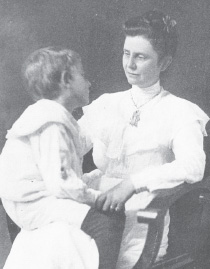

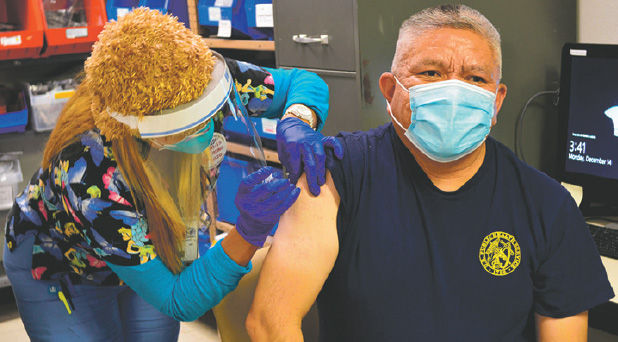
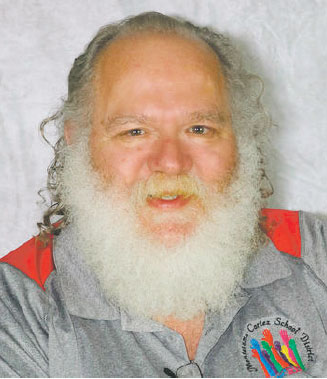

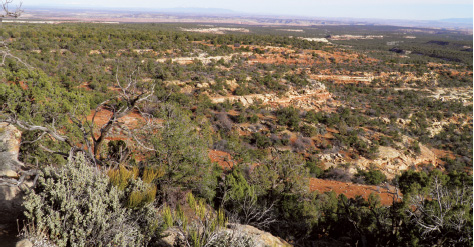


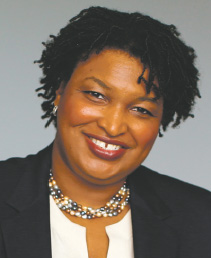
 Now this isn’t as weird as it sounds. Christmas has its fair share of monsters in different cultures around the world. Think of the Krampus, or Frosty the Snowman. But I have never met anyone outside of my sisters — and not even all of them — who admits to knowing the book about Kris Kringle’s extraterrestrial sidekick.
Now this isn’t as weird as it sounds. Christmas has its fair share of monsters in different cultures around the world. Think of the Krampus, or Frosty the Snowman. But I have never met anyone outside of my sisters — and not even all of them — who admits to knowing the book about Kris Kringle’s extraterrestrial sidekick.
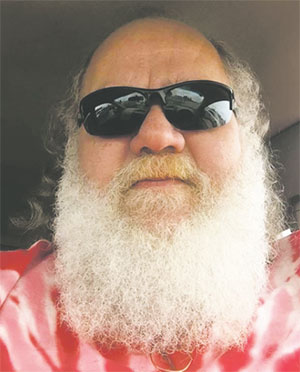
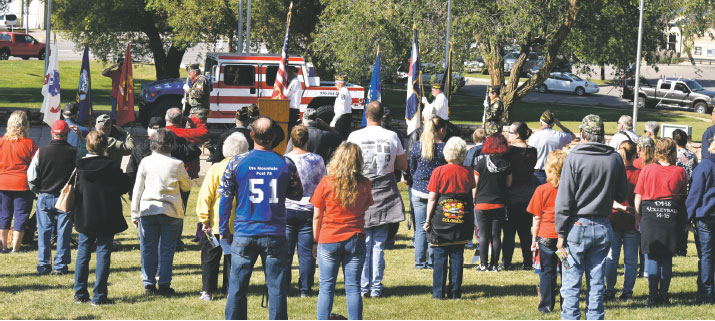

 Four Corners area readers will find much to appreciate in Burrillo’s account of the human history behind the magnificent landscape in southeastern Utah preserved by the Obama administration in 2016.
Four Corners area readers will find much to appreciate in Burrillo’s account of the human history behind the magnificent landscape in southeastern Utah preserved by the Obama administration in 2016. My ongoing foray into foodie literature took me to the latest book by Bill Buford, titled Dirt. One of the premises of this book is that the amazing bread from the bakery across the street from the author’s apartment in Lyon, France, is based on an unexpected source.
My ongoing foray into foodie literature took me to the latest book by Bill Buford, titled Dirt. One of the premises of this book is that the amazing bread from the bakery across the street from the author’s apartment in Lyon, France, is based on an unexpected source.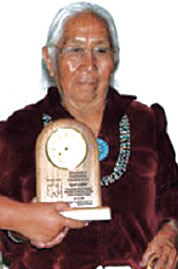

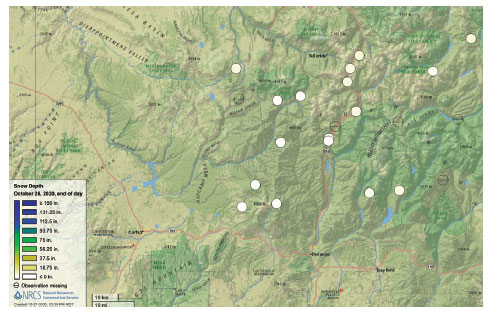
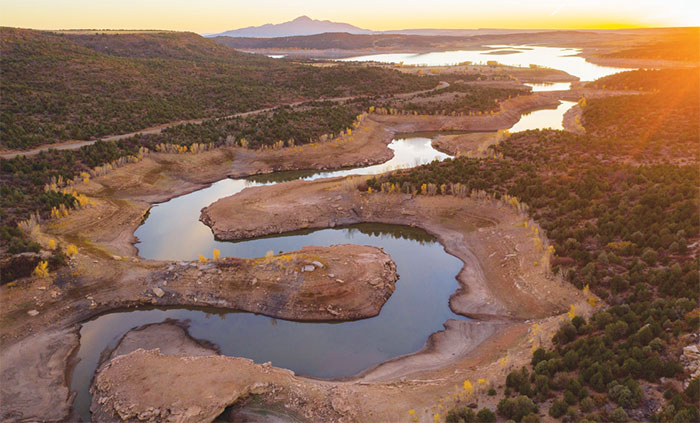

 Even better for Colorado readers, the story takes place in a hotel loosely fashioned on the Stanley Hotel in Estes Park (the same hotel that inspired Stephen King to write The Shining) so there is plenty of Colorado flavor to this story—right down to a big snowstorm that traps our trio of clue-tracking sleuths.
Even better for Colorado readers, the story takes place in a hotel loosely fashioned on the Stanley Hotel in Estes Park (the same hotel that inspired Stephen King to write The Shining) so there is plenty of Colorado flavor to this story—right down to a big snowstorm that traps our trio of clue-tracking sleuths.









